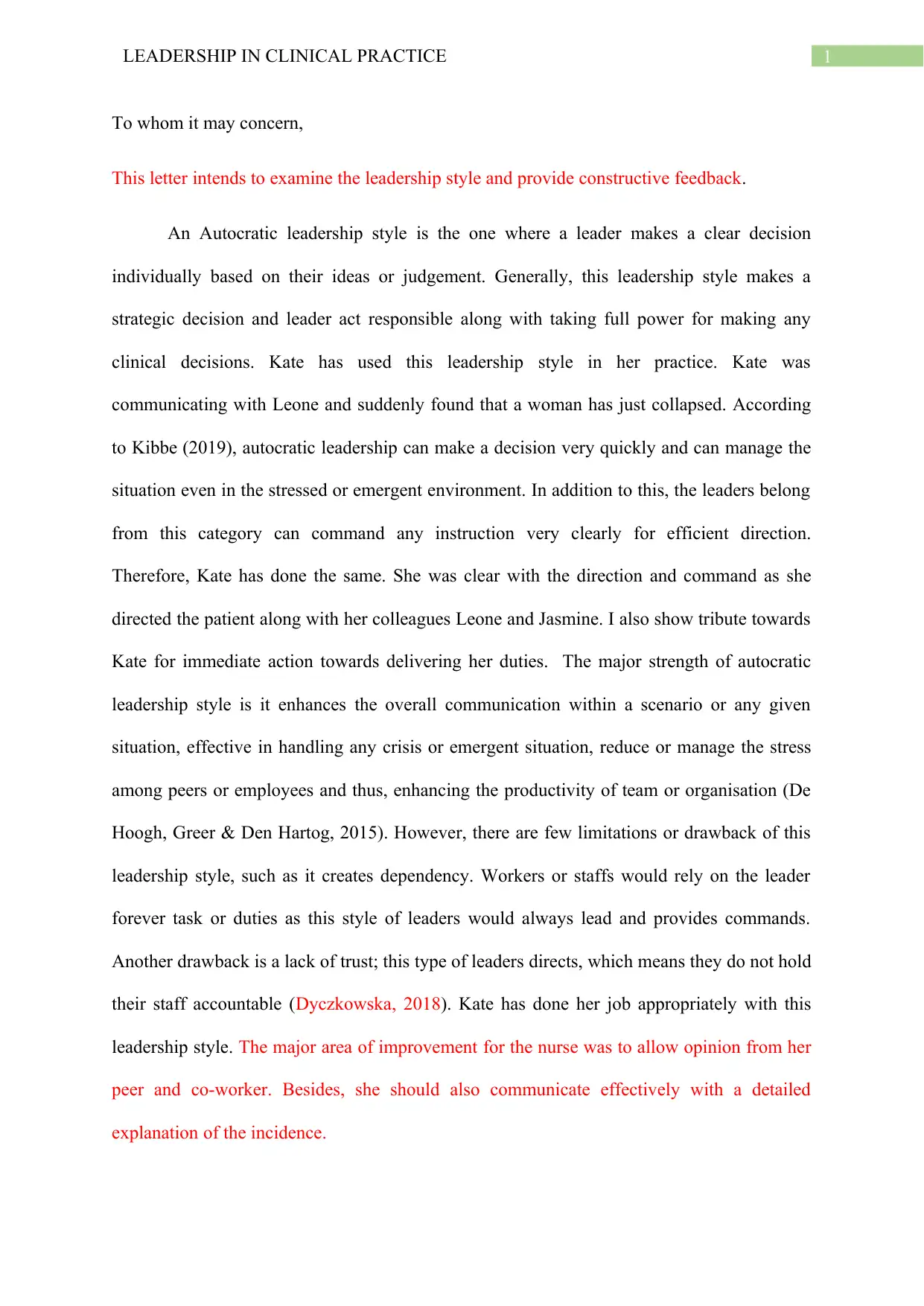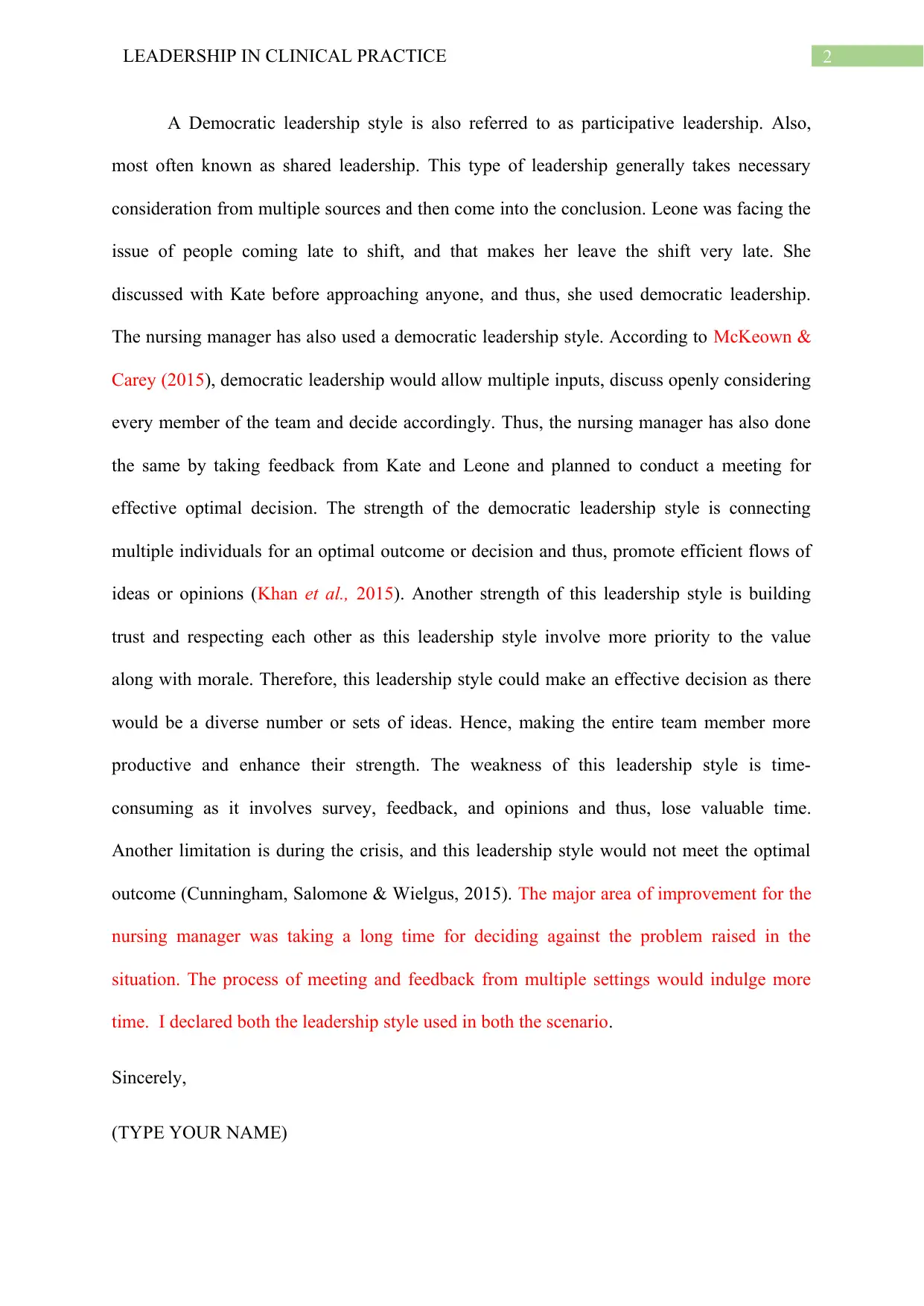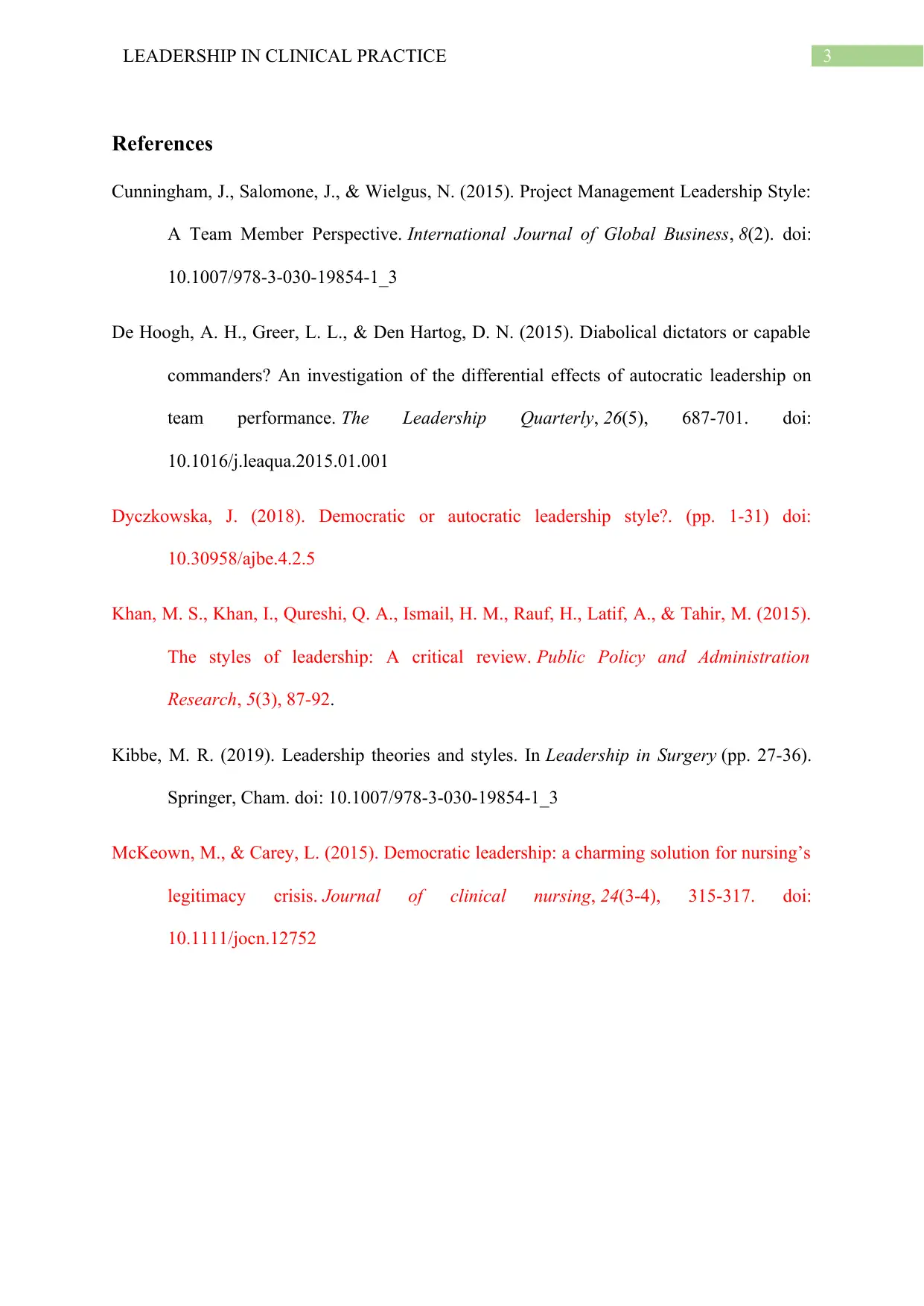400235 Leadership in Clinical Practice: Feedback Analysis
VerifiedAdded on 2022/09/16
|4
|987
|17
Report
AI Summary
This report examines leadership styles in clinical practice, focusing on two key approaches: autocratic and democratic leadership. The analysis begins by defining autocratic leadership, where a leader makes decisions independently, and illustrates its application in a scenario where a nurse, Kate, quickly responds to a patient collapse, highlighting the strengths of decisive action in crisis situations. The report also acknowledges the limitations of this style, such as potential dependency and lack of trust. Conversely, the report discusses democratic leadership, also known as participative leadership, where decisions are made after considering input from multiple sources. This is exemplified through a nursing manager's approach to address staff lateness. The strengths of this style, including fostering trust and collaboration, are contrasted with its weaknesses, such as being time-consuming. The report concludes by offering constructive feedback and recommendations for both leadership styles to improve their effectiveness in the clinical setting. The report uses references to support the analysis of each leadership style.
1 out of 4











![[object Object]](/_next/static/media/star-bottom.7253800d.svg)